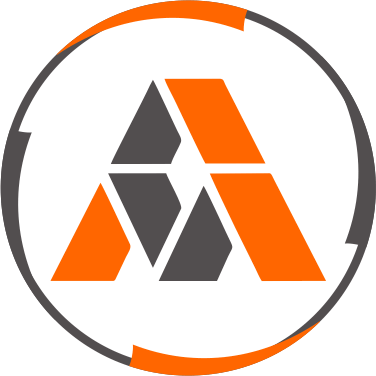Description

ActCAD

Zbrush
Comprehensive Overview: ActCAD vs Zbrush
ActCAD and ZBrush are both computer-aided design (CAD) tools, but they cater to different functions and target markets. Here’s a detailed overview of each:
ActCAD
a) Primary Functions and Target Markets
-
Primary Functions: ActCAD is primarily a 2D drafting and 3D modeling software designed for engineers, architects, and other design professionals who require CAD capabilities. It offers features like drawing and editing tools, layers management, block libraries, and various import/export options for DWG/DXF files. The software is based on the IntelliCAD engine, making it compatible with industry-standard file formats.
-
Target Markets: ActCAD targets professionals in the fields of architecture, engineering (civil, electrical, mechanical), interior design, and other domains that rely on precise technical drawings and schematics. Small to medium-sized enterprises (SMEs) and freelance professionals often choose ActCAD due to its cost-effectiveness compared to more expensive CAD solutions.
b) Market Share and User Base
ActCAD has a more niche market share compared to industry giants like AutoCAD. Its user base primarily consists of cost-sensitive professionals and smaller firms seeking a robust yet affordable alternative. Exact market share figures are not as prominently published, but its competitive pricing and feature set have garnered a loyal user base.
c) Key Differentiating Factors
- Cost: One of ActCAD's biggest advantages is its affordable pricing compared to solutions like AutoCAD.
- Compatibility: ActCAD boasts high compatibility with DWG/DXF formats, ensuring seamless data exchange with other CAD platforms.
- Ease of Use: For users familiar with IntelliCAD-based applications, ActCAD’s interface is often intuitive and straightforward.
ZBrush
a) Primary Functions and Target Markets
-
Primary Functions: ZBrush is a digital sculpting tool that integrates 3D/2.5D modeling, texturing, and painting. It is particularly renowned for its capability to handle detailed sculpting for characters and high-resolution models, using a proprietary “pixol” technology that stores information on lighting, color, material, and depth.
-
Target Markets: ZBrush is primarily used in the entertainment industry by professionals involved in film, video game development, and concept design. It’s favored by artists and character designers who need to create highly detailed models and textures.
b) Market Share and User Base
ZBrush commands a significant presence within its niche in the digital sculpting and modeling market. It is a preferred tool among many large-scale studios and independent artists due to its powerful functionality and frequent updates. While it may not overshadow more generalized 3D applications like Blender or Maya in terms of market share, its specialization gives it a distinguished position among creators who require intricate detailing.
c) Key Differentiating Factors
- Sculpting Ability: ZBrush offers unparalleled capabilities in terms of sculpting and detailing intricate designs, which sets it apart from more generalized 3D design software.
- Pixol Technology: ZBrush’s unique approach to modeling with pixols allows artists to retain high levels of detail not just in models, but in textures and lighting.
- Community and Resources: It supports a vibrant community and offers extensive resources, including plugins and a strong support network.
Comparing ActCAD and ZBrush
- Functionality: ActCAD focuses on technical drawing suited for engineering applications, while ZBrush excels in artistic and creative modeling.
- Target Audience: ActCAD targets architects and engineers, whereas ZBrush is aimed at digital artists and entertainment industry professionals.
- Market Position: Both hold significant positions in their respective specialized markets, although ActCAD serves a broader industry purpose, and ZBrush is more niche-focused.
In essence, ActCAD and ZBrush are distinct tools serving different needs. ActCAD addresses the architectural and engineering design markets with robust CAD capabilities, whereas ZBrush provides artistic professionals with powerful sculpting and modeling tools.
Contact Info

Year founded :
2006
+91 80 4610 1380
Not Available
India
http://www.linkedin.com/company/actcad-software

Year founded :
Not Available
Not Available
Not Available
Not Available
Not Available
Feature Similarity Breakdown: ActCAD, Zbrush
ActCAD and ZBrush are both professional software tools used in the field of design and modeling, but they serve different purposes and target different industries. Here’s a breakdown of their similarities, differences, and unique features:
a) Core Features in Common
Despite their different primary uses, ActCAD and ZBrush do share some core features:
-
3D Modeling Capabilities: Both software packages offer robust 3D modeling tools. ActCAD is primarily a CAD software providing precision tools for engineering designs, while ZBrush is known for digital sculpting and modeling, often used in the entertainment industry for character and concept design.
-
File Import/Export Options: Both ActCAD and ZBrush support a variety of file formats to import and export models, allowing integration with other software in a production pipeline.
-
Customization and Scripting: Both tools offer ways to customize workflows. ActCAD uses scripting and customization through LISP and other programming interfaces, while ZBrush provides scripting through ZScript for automation and custom tool creation.
b) User Interface Comparison
The user interfaces of ActCAD and ZBrush are tailored to their specific uses:
-
ActCAD: This tool has a more traditional CAD interface, with menus and toolbars that are standard in engineering and architectural software. It focuses on precision, technical drafting tools, and features heavily grid-based interfaces suitable for CAD designs.
-
ZBrush: ZBrush features a more unique and artistic interface, which might seem unconventional to new users. It focuses on tools for digital sculpting with a high emphasis on the visual elements, having a more fluid and intuitive layout which leans towards artistic manipulation rather than technical precision.
c) Unique Features
ActCAD:
- Precision Drafting Tools: Provides intuitive tools for precision drafting suitable for engineering purposes, especially for fields requiring detailed technical plans.
- Extensive CAD Libraries: Contains extensive libraries and support for native DWG & DXF file formats, which are industry standards in CAD applications.
ZBrush:
- Digital Sculpting Tools: Known for its sophisticated sculpting tools, ZBrush allows artists to create highly detailed models with ease.
- PolyPainting: This allows artists to paint directly on the surface of the model without assigning a texture map first.
- DynaMesh and ZRemesher: Both features assist in creating and optimizing topology dynamically so that artists can focus on creativity without technical limitations.
In summary, while ActCAD and ZBrush share some fundamental 3D modeling capabilities and customization options, their primary functions, user interfaces, and unique features are finely tuned to their target audiences in technical CAD design and digital artistry, respectively.
Features

Not Available

Not Available
Best Fit Use Cases: ActCAD, Zbrush
ActCAD and ZBrush are both specialized software tools used in design and modeling, but they cater to different needs and industries. Below is a breakdown of their best fit use cases, potential business or project scenarios, and their appeal to different industry verticals and company sizes.
ActCAD
a) For what types of businesses or projects is ActCAD the best choice?
ActCAD is primarily a CAD software used for creating detailed 2D and 3D engineering drawings. It is built on the IntelliCAD platform and is suitable for:
-
Architecture and Engineering Firms: Ideal for businesses involved in civil and structural engineering projects. It supports a plethora of CAD file formats which is vital for these industries.
-
Manufacturing and Industrial Design: Companies in sectors like machinery, automotive, and electronics can use ActCAD for designing mechanical components and assemblies.
-
Construction and Real Estate: Useful for creating architectural layouts, floor plans, and construction details.
-
Small to Mid-Size Enterprises (SMEs): Especially those seeking a cost-effective alternative to more expensive CAD solutions like AutoCAD, benefiting from its affordability and comprehensive features.
d) How do these products cater to different industry verticals or company sizes?
-
Industry Verticals: ActCAD supports fields that rely heavily on precision engineering, such as civil, mechanical, and electrical engineering. Its features for 2D drafting and 3D modeling make it versatile for different technical disciplines.
-
Company Sizes: Given its affordability and robust functionality, ActCAD is particularly appealing to SMEs or startups in the engineering and construction sectors. Larger enterprises might use ActCAD as a supplementary tool or for specific projects needing cost-effective solutions.
ZBrush
b) In what scenarios would ZBrush be the preferred option?
ZBrush is a digital sculpting tool used for creating high-resolution 3D models and texture painting. Its use cases include:
-
Entertainment Industry: Companies involved in film, television, video games, and animation heavily utilize ZBrush for character and environment modeling due to its advanced sculpting capabilities.
-
Game Development Studios: Preferred for creating detailed characters, creatures, and assets that require intricate detailing and realism.
-
Artists and Designers: Freelancers or individual artists focusing on concept art, illustration, or digital sculpting find ZBrush an invaluable tool for creative expression.
-
Toy and Collectible Design: Ideal for designing action figures or collectible items, where detail and artistry are crucial.
d) How do these products cater to different industry verticals or company sizes?
-
Industry Verticals: ZBrush is particularly strong in industries where creativity and aesthetic design are paramount, such as entertainment, gaming, and arts. Its tooling allows for highly detailed and complex designs, making it a staple in these creative verticals.
-
Company Sizes: ZBrush caters to both large studios and small indie developers or individual artists. Its powerful tools are accessible enough for personal projects, yet robust enough for major studio productions.
In summary, ActCAD and ZBrush serve vastly different sectors with distinct requirements. ActCAD thrives in technically-centric environments such as engineering and manufacturing, while ZBrush excels in creative industries requiring detailed and artistic 3D modeling. Both software solutions offer scalable features that benefit a range of company sizes from solo practitioners to larger firms.
Pricing

Pricing Not Available

Pricing Not Available
Metrics History
Metrics History
Comparing teamSize across companies
Conclusion & Final Verdict: ActCAD vs Zbrush
When evaluating ActCAD and Zbrush, it's essential to consider their unique features, target audiences, and usability.
a) Best Overall Value
-
ActCAD is generally designed for professionals in the fields of engineering, architecture, and construction. It offers a cost-effective solution for 2D and 3D drafting with compatibility and functionality that meets industry standards.
-
Zbrush, on the other hand, is renowned for its advanced 3D sculpting and modeling capabilities, primarily targeted at artists, designers, and creators involved in character modeling, gaming, film, and digital art.
Considering all factors, the best overall value depends largely on the use case:
-
If the user's needs are aligned with CAD design, drafting, and related industries, ActCAD offers the best value due to its affordability, functionality, and license flexibility.
-
For 3D artists and designers focusing on character creation, sculpting, and highly detailed modeling, Zbrush provides unmatched value in terms of capabilities and specialized tools.
b) Pros and Cons
ActCAD
Pros:
- Cost-effective compared to other CAD solutions
- Offers both 2D drafting and 3D modeling capabilities
- Compatible with DWG/DXF formats, ensuring interoperability with industry-standard files
- Lifetime license options with no subscriptions, making it financially appealing
Cons:
- Limited in terms of highly detailed 3D modeling and sculpting
- May lack some advanced CAD features available in more expensive software
Zbrush
Pros:
- Industry-leading 3D sculpting and modeling tools
- Highly detailed and advanced customization options for characters and models
- Strong community and plentiful tutorials, resources, and support
- Regular updates that enhance features significantly
Cons:
- Steeper learning curve, especially for beginners unused to 3D sculpting software
- Higher initial cost and no perpetual licensing option
- Not ideal for traditional drafting or CAD purposes
c) Recommendations
-
For Engineers, Architects, and CAD Professionals: If your primary need is related to drafting and technical drawing, ActCAD provides a robust platform without breaking the bank. It is especially recommended if interoperability with DWG/DXF files is a priority.
-
For Artists and Character Designers: Choose Zbrush if your focus is on creating detailed 3D art, sculptures, and animations. Its toolset is tailored for digital artists needing specific features that other CAD tools do not offer.
For users undecided between the two, consider the following:
-
Assess Your Needs: Define whether your primary requirement is drafting and precision (ActCAD) or artistic modeling and sculpting (Zbrush).
-
Budget Consideration: Weigh the cost against your project needs. ActCAD is budget-friendlier; whereas Zbrush might justify its higher cost with its unique artistic capabilities.
-
Try Before You Buy: Both software options often have trial versions. Testing them can provide personal insight into usability and suitability for your projects.
In conclusion, there is no absolute best as each serves a different area of expertise. Your choice should reflect your specific needs and focus within the realms of design and modeling.
Add to compare
Add similar companies



